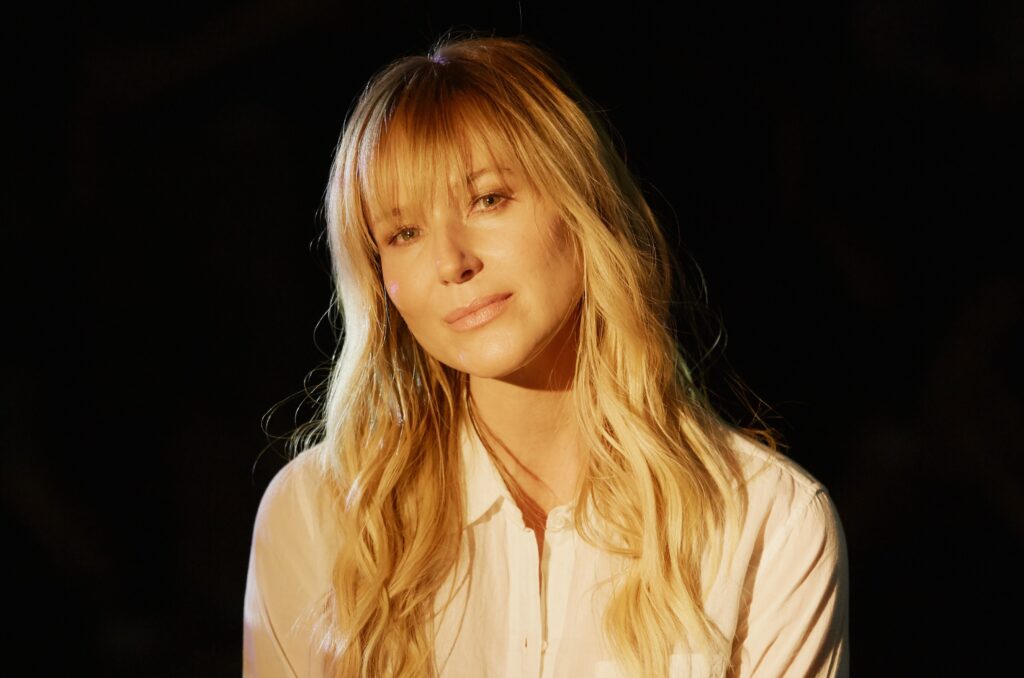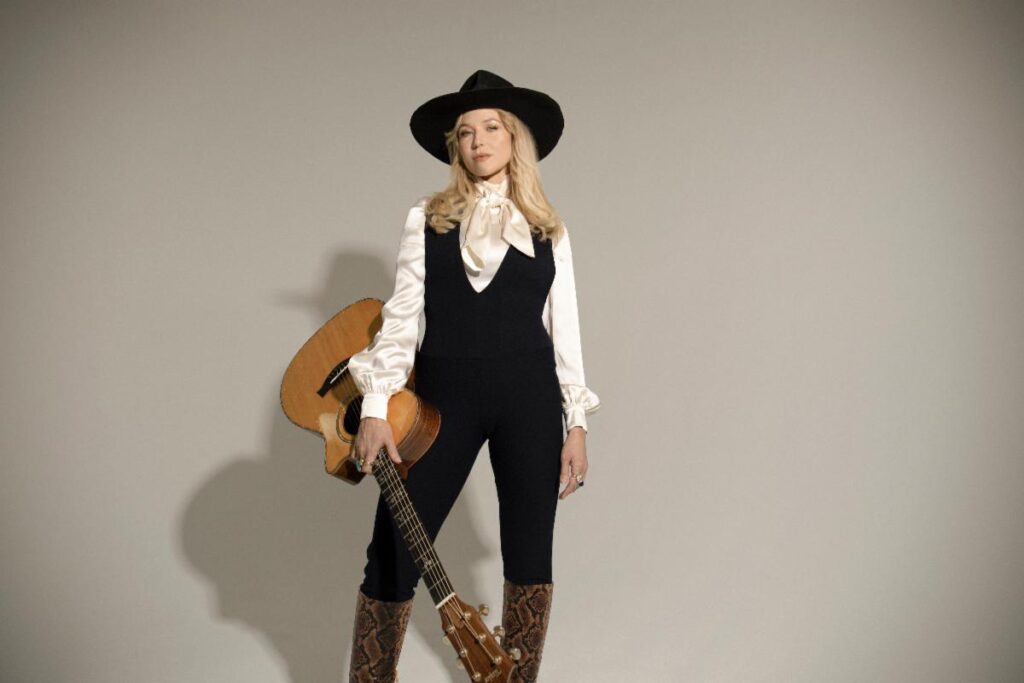Pop star Jewel is lending her hard-earned credibility in the mental health sphere to a metaverse of Cognitive Behavior Therapy, where participants can roam as avatars in a virtual world of trained guides and mutual support.
The singer is co-founder of Innerworld, the brainchild of gamer turned doctoral candidate in clinical psychology Noah Robinson.
SPIN spoke to both Jewel and Mr. Robinson about Innerworld.
SPIN: What was your path to Innerworld?

Also Read
Pretty Good Year: My Top Stories of 2022
Jewel: It started just with my own life. I moved out at 15. I left an abusive household, and I knew that, just like I might have a genetic inheritance that would give me a predisposition to diabetes or heart disease, I had an emotional inheritance that would give me a predisposition to abuse or addiction and repeating the cycles I was raised in.
It really bothered me that happiness might not be accessible to someone like me who was on the fringe — who didn’t have traditional support systems like therapy at my disposal.
What happened when you were a kid?
My dad grew up in a really abusive environment: to the point where, when he went away to Vietnam, it was the first time he relaxed. So that’s a terrible sign. When my mom left when we were eight, my dad started drinking to try to manage that [his trauma]. He became an alcoholic and physically abusive to the point where I decided to move out at 15.
I realized that rage and alcoholism and addiction, all of these things ran in my family for generations, and I didn’t want to repeat the cycle. But if I was going to be the first person to try and learn a new way of being, it meant I really had to go to school on it. But there was no school. When I was 15, there weren’t words like “mindfulness” or “mental health” even.
So I set off on learning what I called the new emotional language, a new emotional way of relating to the world.
And for some reason I had two skills: One was writing songs, and the other was coming up with behavioral exercises for myself that targeted specific pain points. Like I started with [addressing my compulsive] shoplifting, and then I went to my panic attacks, and then I went to my agoraphobia, and I just kept doing.
And these tools that I developed got validated by people in the mental health field. And I wanted to see if they could help other people that were, like me, disenfranchised people.

What were some of the tools you developed?
I wanted to stop shoplifting. It started with food, and then turned into clothing and jewelry. It was a real problem. So I thought, “I’ll build up my muscle of awareness,” which took me eight months because I was just so dissociated that I used to just wake up after I stole.
All of a sudden I’d be like, “Oh, my God, I did it again.” Like, I was on autopilot, but now I felt a ton of shame and guilt. It took a long time of building the ability to stay present to where I would start to notice: “Here I am, stealing.” But I couldn’t stop it.
The very, very last thing, after months of building presence and awareness, was now I could intervene and replace my stealing behavior when I’m stimulated with writing. Which I thought would be a no-brainer. I loved writing. But I hated writing at this moment when I felt the prompt to steal.
Which was very curious. Why would that be? I should just really like the reward of writing rather than the reward of stealing. So that’s when I just got very quiet, still and released my body as a barometer. Because when I stole, my whole body would tense, get excited, and lean forward.
And when I wrote, I felt my whole body relax and lean back. That made me really curious. I started to realize that there were only these two states [contracted and dilated]. I came to realize that I didn’t have a stealing addiction as much as I had a contraction addiction. And so the way a lot of people medicate loud anxiety is by doing something even louder.
A lot of us, especially if you’re raised in a traumatic background or you have a highly stressful job, you get neurologically addicted to that contracted state. So you have to have real strategic plans around helping your body get into the other state.
For agoraphobia, I would think of the worst case scenario if I left the street corner that I was on. Because I would be really afraid that I’d become sick and have a panic attack. So I would think of the worst-case scenario, and then I would make a plan for it.
So the worst-case scenario is I have a panic attack in public: in front of people. Now, if that happens, what would I do? So I would create a really specific detailed plan, and then I would consider what is the best-case scenario, and then I would make a plan that might help me have that outcome. Then I thought of the most probable scenario, what was the most likely thing to happen. And so with that tool, I felt really equipped and armed to go ahead and take a risk of going to the grocery store, going out in public, because I knew exactly what I would do if my worst-case scenario happened.
This calmed my anxiety to the point where I really could function and go ahead and try something new.
Did your father even gain insight into the way he was?
When I left home, I didn’t think my dad and I would ever have a relationship. I just really worked on healing. And my dad worked on his own life. He got sober and started healing on his own.
He wrote a book called Son of a Midnight Land that chronicles what it’s like for men — especially raised in that generation — to overcome so much trauma and shame and try to heal. And in his late 60s, we were able to meet as two radically different people, and we have a great relationship now.
I’ve been working with kids for 22 years: kids with complex trauma, complex PTSD, self-harm, all kinds of things. And with healing family systems. We don’t get to control anybody else’s behavior. I really believe when we heal ourselves, everything gets better with the relationships around us, and sometimes the people around us heal too.
How do users “use” Innerworld?
People will typically come in around a specific pain point: maybe anxiety or social anxiety, or agoraphobia, or depression, PTSD, chronic illness — the list goes on. Then you can talk to guides about that problem. Specifically. There is a live guide 24 hours a day, seven days a week.
Let’s pretend your dog passes away and you’re overcome with grief. You can log on anytime, meet a guide in a community area and say, “My dog just passed away.” And the guide might say: “Have you ever seen the grief cycle?”, and they can spawn a tool, a visual aid that talks about the grief cycle: a clinically proven tool that’s been around for quite a long time. And then they might say, “Would you like to talk about it? Or would you like to attend a meeting about grief?”
That’s typically what somebody’s experience is like. You can hang out in the group setting. There are no trolls: We’re a troll-free environment. We have very sophisticated monitoring moderating tools as well as anti-troll software that we’ve developed to keep it a really safe place emotionally.
So that’s how people use it. We’re a peer-to-peer mental health intervention: not one-on-one psychotherapy. You’re working with guides trained in CBT and DBT [Dialectical Behavior Therapy]. Those are clinically proven tools that have tons of decades of research around their validity. And so we teach classes of groups of up to 30 people around specific tools.

How do you recruit guides for Innerworld?
Right now we have a waiting list of hundreds of people that want to be trained as guides. A lot of them are people that have used the platform and really benefited from it. They train up, and they are paid. We believe we can move into a gig economy model where we can train guides to be there and we can send out a mass notification saying, “Hey, we need guides in three hours or tomorrow.”
We have a specific screening process to make sure that these people have a temperament that lends itself to this. And our training program makes sure that these people are prepared. We have really robust moderation tools as well. Our guides are empowered to make sure that our support groups stay on track.
How did you come up with Innerworld?
Noah Robinson: I went through my own mental health struggles when I was 13. I realized I was gay and became depressed, and I escaped into a video game called RuneScape which was — like World of Warcraft — a massive multiplayer online environment.
I had almost 10,000 hours in RuneScape throughout my teenage years: I was kind of living in that virtual world. It kept me going: I was getting dopamine hits as I was leveling up my different skills; I was an avatar; I was anonymous, so I had a social community where people didn’t know who I was, and eventually I felt comfortable enough to come out of the closet to my clan. And that empowered me to come out in the real world.
It saved my life, but it also led me to be failing my classes in the real world. That experience led me to think: “What if we could actually build a virtual environment that has those same properties of allowing people to be anonymous as avatars and have social interaction, but that was also designed to have people come back to reality more empowered than they left it?”
And that’s what really gave me the idea for Innerworld. I’d wanted to be a clinical psychologist since I was 10. I was always interested in therapy, and I was good at reading people. I went to undergraduate at the University of Maryland, where, because I was undergraduate, I couldn’t get formal clinical experience but I could do peer counseling.
Seeing how we can teach non-professionals these skills and have them able to lead groups and have interactions and facilitate social support got me really interested in using peer support.
When I got to Vanderbilt University [in Tennessee] to pursue my PhD in clinical psychology, as I mastered CBT and other kinds of evidence-based mental health interventions, I realized these are tool focused — they are designed for [non-professional] people to be able to learn the tools of CBT. Because they’re so straightforward, it’s not that far of a stretch to say we can teach people to teach each other these tools.
So it was that combination of my experience of living in a virtual environment that sucked me in — but experiencing something positive out of that, and the realization that peers can do a lot, led to the creation of Innerworld, which combines that virtual world with the kind of trained formal peers that we can use to deliver this live mental health group support.
How was your idea received at Vanderbilt?
I got accepted to Vanderbilt to work with someone who didn’t support the idea, and I almost got kicked out. But during that time, I thought someone on this campus must be supportive of the idea of VR and mental health.
So I found the Wond’ry [Vanderbilt’s innovation center] on campus that really helped students translate their ideas into companies. And that’s when I really was able to get the support that I needed. I switched mentors to the person who’s now my mentor: the world famous expert in CBT, Steve Hollon, who is a protege of Aaron Beck, who created CBT. Steve Hollon hadn’t taken a student in 15 years, but he saw what I was doing, was really impressed, and took me in as a student.
So the combination of my experience at the Wond’ry and my mentor really led me to be able to create the company. We got funding, and I started learning how to raise money, venture capital investment, and get grants and things like that. I learned the basics of programming and creating virtual environments, and then eventually I was able to hire people to do that.
Over the past four years I bootstrapped the company to get it to the point where it is today. Meeting Jewel — who has been doing peer-based mental health intervention for adolescents for 20 years — and combining forces was a really powerful part of taking this to the next level.
We’re growing like 50% month over month, we had over 10,000 users over the past two or three months.
Do you roam around in there much?
Yes, I do. I go in a lot, and people are really excited to see me there. That’s another way we’ve built this whole platform. A lot of mental health apps are built from the top down; the company makes an app and launches it to health insurers.
We were beta testing for four years, building the app with our end users helping to design every step of the way. So people with lived experience with mental health issues are able to influence the design and implementation of the intervention. That helps make it more effective.
What are examples of things that users have suggested?
The biggest thing are community guidelines: the ground rules that we set for the platform. For example, someone who’s in recovery from substances wanted to make sure we’re not having graphic descriptions of problematic use of substances. People can talk about being in recovery from heroin, but we don’t wanna be talking about needles and specific situations.
Another example would be with people with trauma: striking a balance between how we can create meetings to support people with trauma while making sure that we’re not going too deep or stepping into that realm of therapy for someone who has PTSD.
We always invite feedback from our end users, and just by knowing that they can provide feedback helps make it better if we do make a mistake somewhere — because they know: “Okay, I’m helping to contribute to this; I can provide feedback; they’ll change based on our feedback.”
That’s part of CBT: a collaboration between the people delivering the intervention and those receiving it. We want to keep that collaborative feel with our mental health intervention. It’s very different from the model of Freudian psychology where you have the therapist sitting there with a blank face, and the person’s talking, and the therapist isn’t really collaborating — they’re just reflecting back to the person.
We’re really trying to build something where people feel like they’re a part of a larger community. Just like I was a part of RuneScape.
Do users spend all their time in Innerworld like you did with RuneScape?
We’re probably one of the only digital products where if we notice people using it too much, we encourage them to use it less. It’s kind of counterintuitive, but we can track if someone’s logging in every day for many hours. We’re able to approach that person and ask, “Hey, what’s going on in the real world? What’s leading you to wanna escape and problem solve with them so that they are living in the real world in a better way?”
We’re trying to help people spend less time escaping and more time living in reality, with these tools, in a better way. Our long-term model is that this is a place people can come whenever they need help with what life throws at us.




